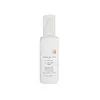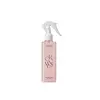What's inside
What's inside
 Key Ingredients
Key Ingredients

No key ingredients
 Benefits
Benefits

 Concerns
Concerns

 Ingredients Side-by-side
Ingredients Side-by-side

Cyclotetrasiloxane
EmollientCyclopentasiloxane
EmollientAlcohol Denat.
AntimicrobialParfum
MaskingPolyglyceryl-4 Isostearate
EmulsifyingHexyl Laurate
EmollientCetyl PEG/PPG-10/1 Dimethicone
EmulsifyingWater
Skin ConditioningCetearamidoethyldiethonium Succinoyl Hydrolyzed Pea Protein
CleansingHypnea Musciformis Extract
Skin ProtectingGlycerin
HumectantSargassum Filipendula Extract
Skin ProtectingGelidiella Acerosa Extract
Skin ProtectingSalvia Hispanica Seed Oil
MoisturisingSorbitol
HumectantCaprylic/Capric Triglyceride
MaskingXanthan Gum
EmulsifyingHydrolyzed Keratin
HumectantCoco-Glucoside
CleansingCarrageenan
Algin
MaskingLitchi Chinensis Pericarp Extract
Skin ConditioningChitosan
Cyclotetrasiloxane, Cyclopentasiloxane, Alcohol Denat., Parfum, Polyglyceryl-4 Isostearate, Hexyl Laurate, Cetyl PEG/PPG-10/1 Dimethicone, Water, Cetearamidoethyldiethonium Succinoyl Hydrolyzed Pea Protein, Hypnea Musciformis Extract, Glycerin, Sargassum Filipendula Extract, Gelidiella Acerosa Extract, Salvia Hispanica Seed Oil, Sorbitol, Caprylic/Capric Triglyceride, Xanthan Gum, Hydrolyzed Keratin, Coco-Glucoside, Carrageenan, Algin, Litchi Chinensis Pericarp Extract, Chitosan
Cyclopentasiloxane
EmollientCyclohexasiloxane
EmollientIsopropyl Myristate
EmollientAlcohol Denat.
AntimicrobialParfum
MaskingCaprylyl Glycol
EmollientDimer Dilinoleyl Dimer Dilinoleate
EmollientTocopheryl Acetate
AntioxidantWater
Skin ConditioningSynthetic Fluorphlogopite
Titanium Dioxide
Cosmetic ColorantEclipta Prostrata Extract
Skin ConditioningMelia Azadirachta Leaf Extract
Skin ConditioningMenthol
MaskingMoringa Oleifera Seed Oil
EmollientButylene Glycol
HumectantBiotin
AntiseborrhoeicHelianthus Annuus Seed Oil
EmollientSea Water
HumectantSaccharomyces/Rice Ferment Filtrate
Skin ConditioningGlycerin
HumectantSaccharomyces Ferment Filtrate
Humectant1,2-Hexanediol
Skin ConditioningCaprylic/Capric Triglyceride
MaskingHydrolyzed Keratin
HumectantBifida Ferment Lysate
Skin ConditioningHydrolyzed Elastin
EmollientSpirulina Platensis Extract
Skin ProtectingHydrogenated Lecithin
EmulsifyingHydrolyzed Collagen
EmollientMilk Protein Extract
Pearl Extract
AntioxidantLecithin
EmollientCeramide NP
Skin ConditioningDiospyros Kaki Fruit Extract
Skin ConditioningCamellia Japonica Leaf Extract
Skin ConditioningCeratonia Siliqua Fruit Extract
MaskingTropolone
Skin ConditioningEcklonia Cava Extract
Skin ConditioningGelidium Cartilagineum Extract
Skin ProtectingLaminaria Japonica Extract
Skin ProtectingLactobacillus Ferment
Skin ConditioningLactococcus Ferment
Skin ConditioningUndaria Pinnatifida Extract
Skin ConditioningBacillus Ferment
Skin ConditioningSoluble Collagen
HumectantCitric Acid
BufferingAspergillus Ferment
Skin ConditioningHizikia Fusiforme Extract
Skin ConditioningPolysorbate 20
EmulsifyingHydrolyzed Pearl
Skin ConditioningAureobasidium Pullulans Ferment
Skin ConditioningEthylhexylglycerin
Skin ConditioningCollagen
MoisturisingGlutamic Acid
HumectantAspartic Acid
MaskingGlucose
HumectantMannose
HumectantCollagen Amino Acids
MoisturisingLysine
Skin ConditioningArginine
MaskingMethionine
Skin ConditioningCysteine
AntioxidantSodium Ascorbyl Phosphate
AntioxidantHydrolyzed Wheat Protein
Skin ConditioningHydrolyzed Rice Bran Protein
Skin ConditioningHydrolyzed Rice Protein
Skin ConditioningHydrolyzed Corn Protein
Skin ConditioningHydrolyzed Soy Protein
HumectantDisodium EDTA
Maltodextrin
AbsorbentSorbitol
HumectantFructan
Skin ConditioningFructooligosaccharides
HumectantOligopeptide-3
Skin ConditioningOligopeptide-1
Skin ConditioningCitronellol
PerfumingGeraniol
PerfumingLinalool
PerfumingEugenol
PerfumingLimonene
PerfumingCyclopentasiloxane, Cyclohexasiloxane, Isopropyl Myristate, Alcohol Denat., Parfum, Caprylyl Glycol, Dimer Dilinoleyl Dimer Dilinoleate, Tocopheryl Acetate, Water, Synthetic Fluorphlogopite, Titanium Dioxide, Eclipta Prostrata Extract, Melia Azadirachta Leaf Extract, Menthol, Moringa Oleifera Seed Oil, Butylene Glycol, Biotin, Helianthus Annuus Seed Oil, Sea Water, Saccharomyces/Rice Ferment Filtrate, Glycerin, Saccharomyces Ferment Filtrate, 1,2-Hexanediol, Caprylic/Capric Triglyceride, Hydrolyzed Keratin, Bifida Ferment Lysate, Hydrolyzed Elastin, Spirulina Platensis Extract, Hydrogenated Lecithin, Hydrolyzed Collagen, Milk Protein Extract, Pearl Extract, Lecithin, Ceramide NP, Diospyros Kaki Fruit Extract, Camellia Japonica Leaf Extract, Ceratonia Siliqua Fruit Extract, Tropolone, Ecklonia Cava Extract, Gelidium Cartilagineum Extract, Laminaria Japonica Extract, Lactobacillus Ferment, Lactococcus Ferment, Undaria Pinnatifida Extract, Bacillus Ferment, Soluble Collagen, Citric Acid, Aspergillus Ferment, Hizikia Fusiforme Extract, Polysorbate 20, Hydrolyzed Pearl, Aureobasidium Pullulans Ferment, Ethylhexylglycerin, Collagen, Glutamic Acid, Aspartic Acid, Glucose, Mannose, Collagen Amino Acids, Lysine, Arginine, Methionine, Cysteine, Sodium Ascorbyl Phosphate, Hydrolyzed Wheat Protein, Hydrolyzed Rice Bran Protein, Hydrolyzed Rice Protein, Hydrolyzed Corn Protein, Hydrolyzed Soy Protein, Disodium EDTA, Maltodextrin, Sorbitol, Fructan, Fructooligosaccharides, Oligopeptide-3, Oligopeptide-1, Citronellol, Geraniol, Linalool, Eugenol, Limonene
 Reviews
Reviews

Ingredients Explained
These ingredients are found in both products.
Ingredients higher up in an ingredient list are typically present in a larger amount.
Alcohol Denat. is an alcohol with a denaturant property. It is created by mixing ethanol with other additives.
This ingredient gets a bad rep because it is irritating and drying - mostly due to its astringent property. Astringents draw out natural oils in tissue, constricting pores and leaving your skin dried out.
However, alcohol denat. is not all that bad.
Due to its low molecular weight, alcohol denat. tends to evaporate quickly. One study on pig skin found half of applied alcohol evaporated in 10 seconds and less than 3% stayed on skin.
This also helps other ingredients become better absorbed upon application.
Studies are conflicted about whether this ingredient causes skin dehydration. One study from 2005 found adding emollients to propanol-based sanitizer decreased skin dryness and irritation. Another study found irritation only occurs if your skin is already damaged.
Small amounts of alcohol are generally tolerated by oily skin or people who live in humid environments.
The rule of thumb is if this alcohol is near the end of an ingredients list, it will probably not affect your skin much.
Also...
This ingredient has antimicrobial and solvent properties.
The antimicrobial property helps preserve products and increase their shelf life. As a solvent, it helps dissolve other ingredients.
Other types of astringent alcohols include:
Learn more about Alcohol Denat.This ingredient is an emollient, solvent, and texture enhancer. It is considered a skin-softener by helping the skin prevent moisture loss.
It helps thicken a product's formula and makes it easier to spread by dissolving clumping compounds.
Caprylic Triglyceride is made by combining glycerin with coconut oil, forming a clear liquid.
While there is an assumption Caprylic Triglyceride can clog pores due to it being derived from coconut oil, there is no research supporting this.
Learn more about Caprylic/Capric TriglycerideCyclopentasiloxane, or D5, is a silicone used to improve texture of products and trap moisture.
D5 is considered lightweight and volatile. Volatile means it evaporates quickly after application. Once evaporated, D5 leaves a thin barrier that helps keep skin hydrated.
It is also an emollient. Emollients help soften the skin and prevent water loss. Silicones create a silky texture in products. D5 helps other ingredients become more spreadable.
Studies show D5 is safe to use in skincare products. We recommend speaking with a skincare professional if you have concerns.
Learn more about CyclopentasiloxaneGlycerin is already naturally found in your skin. It helps moisturize and protect your skin.
A study from 2016 found glycerin to be more effective as a humectant than AHAs and hyaluronic acid.
As a humectant, it helps the skin stay hydrated by pulling moisture to your skin. The low molecular weight of glycerin allows it to pull moisture into the deeper layers of your skin.
Hydrated skin improves your skin barrier; Your skin barrier helps protect against irritants and bacteria.
Glycerin has also been found to have antimicrobial and antiviral properties. Due to these properties, glycerin is often used in wound and burn treatments.
In cosmetics, glycerin is usually derived from plants such as soybean or palm. However, it can also be sourced from animals, such as tallow or animal fat.
This ingredient is organic, colorless, odorless, and non-toxic.
Glycerin is the name for this ingredient in American English. British English uses Glycerol/Glycerine.
Learn more about GlycerinHydrolyzed Keratin is derived from keratin. Keratin is a large protein that is naturally found in our hair and skin.
Studies show keratin is able to seal broken hair cuticles, helping to prevent split ends and breakage.
As a humectant, hydrolyzed keratin helps draw moisture from the air to your hair and skin. This helps keep your skin and hair hydrated.
Learn more about Hydrolyzed KeratinParfum is a catch-all term for an ingredient or more that is used to give a scent to products.
Also called "fragrance", this ingredient can be a blend of hundreds of chemicals or plant oils. This means every product with "fragrance" or "parfum" in the ingredients list is a different mixture.
For instance, Habanolide is a proprietary trade name for a specific aroma chemical. When used as a fragrance ingredient in cosmetics, most aroma chemicals fall under the broad labeling category of “FRAGRANCE” or “PARFUM” according to EU and US regulations.
The term 'parfum' or 'fragrance' is not regulated in many countries. In many cases, it is up to the brand to define this term.
For instance, many brands choose to label themselves as "fragrance-free" because they are not using synthetic fragrances. However, their products may still contain ingredients such as essential oils that are considered a fragrance by INCI standards.
One example is Calendula flower extract. Calendula is an essential oil that still imparts a scent or 'fragrance'.
Depending on the blend, the ingredients in the mixture can cause allergies and sensitivities on the skin. Some ingredients that are known EU allergens include linalool and citronellol.
Parfum can also be used to mask or cover an unpleasant scent.
The bottom line is: not all fragrances/parfum/ingredients are created equally. If you are worried about fragrances, we recommend taking a closer look at an ingredient. And of course, we always recommend speaking with a professional.
Learn more about ParfumSorbitol is a sugar alcohol. It is a hydrating and moisturizing agent created from the reduction process of glucose.
Most sorbitol is usually made from potato starch. It is also found in fruits such as apples and pears.
As a humectant, Sorbitol helps draw water to the skin. This helps keep the skin hydrated. Sorbitol also helps create a thicker texture in products. You might find sorbitol in your toothpaste and other gels.
It is a non-irritating ingredient that is great for those with dry skin.
Sorbitol is a prebiotic. It helps promote the growth of healthy bacteria on your skin. The bacteria on your skin form a microbiome. This microbiome helps protect your skin from infection and harmful bacteria.
Learn more about SorbitolWater. It's the most common cosmetic ingredient of all. You'll usually see it at the top of ingredient lists, meaning that it makes up the largest part of the product.
So why is it so popular? Water most often acts as a solvent - this means that it helps dissolve other ingredients into the formulation.
You'll also recognize water as that liquid we all need to stay alive. If you see this, drink a glass of water. Stay hydrated!
Learn more about Water